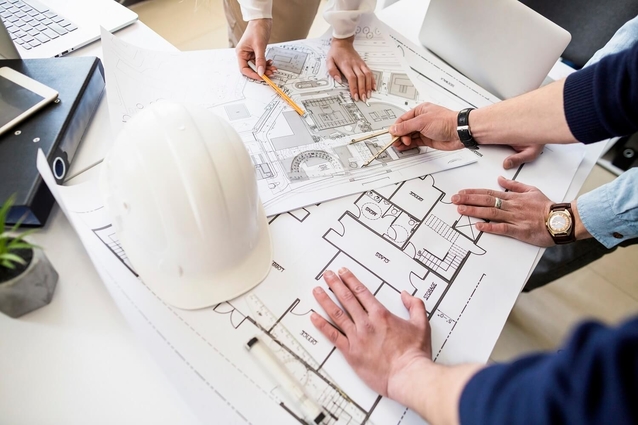How to Plan a Successful Building Project: The Importance of Attention to Detail
There are numerous approaches to completing a construction project, but they all involve effective pre-planning, oversight, and collaboration.
Hire Licenced Professionals

Most homeowners hire either an architect or an interior designer, or both, to establish a blueprint and detailed scope of the project. Every business operates a little differently, and design licensing differs by where it’s located. Many designers work on projects that do not require extensive structural work and they also help with material and design selections. Architects may work on a variety of projects, or they may focus solely on floor plans and permits, leaving the intricacies of the electrical plan, baths, and kitchen to other professionals.
Choosing a professional designer typically begins with an in-person meeting, which might take several weeks depending on the number of businesses you are considering. This is your chance to learn about the services that each organization provides and ensure that they are in line with your expectations. If they offer 3d rendering services, then it’s a plus because it will give you a better insight. It is also crucial that you have a budget in mind for your project, which you discuss clearly with the business of your choosing so that everyone is on the same page at all times.
Get Familiar with the Contract

The contract is the most crucial aspect of the project, aside from the construction activity itself. A well-written contract defines the parties’ agreement, their expectations, and their relative risks and obligations. To avoid construction disputes, make sure that project risks are distributed properly.
When no party has direct control, risks should be delegated to the party best able to protect against an unexpected loss, or to the owners. They launched the building project and will ultimately benefit from the finished result. Risks can include issues such as obtaining the right-of-way, security, environmental problems, or procurement techniques.
Get to the Drawing Board

Once you’ve selected your designers and have signed a contract, it’s time to start laying out the construction plan. The blueprints are known as schematic designs, and they often include a rough layout of the floor plan as well as some rudimentary views of the exterior of the home if such an extension is being built. You can also rely on architectural 3d rendering services to visualise future development and be confident in the design process.
It takes time for the design professional to figure these things out, and then it normally takes another week or two for the homeowners to make the final decisions. This initial step can take several months if it’s a large project or the homeowners want more changes made to the initial blueprints.
Define a Workable Schedule
A construction project’s timeline should be determined by its scope and requirements. Never begin a project under undue time constraints because the output will nearly always degrade as a result. When a contractor is under a lot of time pressure, he or she may be tempted to cut corners. This results in poor workmanship, which leads to construction flaws.
For example, if the weather is worse than expected, or market conditions alter material lead times, give the contractor enough time to complete the task correctly even if this demands a reasonable extension of the initial due date. Contractors also want all permissions to be in place when work begins.
They also anticipate having access to the job site and the completed work of previous contractors just as they anticipate receiving engineering and owner-supplied information on schedule. Floor plans should be checked as soon as possible, and any unforeseen conditions or adjustments should be fairly compensated. Delays are unavoidable if these expectations are not met.
Go Shopping as Early as Possible

Do you enjoy shopping or despise it? This may affect whether you should hire a designer to assist you with your choice of materials. Even those who enjoy shopping may become overwhelmed by the variety of options available and seek professional advice.
Don’t underestimate the number of options available, from doorknobs and windows to countertops and light fixtures. To properly keep your project costs under control, it’s best to choose everything before the building begins. This will allow your contractor to quote you on what you want and properly schedule material purchases depending on lead times.
Allow one to two months to select everything. While you’re looking for tile and hardwood flooring, your architect or designer will finalize construction plans, collaborate with a structural engineer on how the project will be built, and fill in the specifics needed for permitting. If everything goes as planned, you will work on this step and the preceding one simultaneously and complete them both at the same time.
Keep an Eye on the Construction Activities
The smart owner will keep a careful eye on the development of the construction. Owners frequently delegate project management to the construction manager. As a result, they typically are unaware of issues simmering in the field, whether they involve unpaid invoices, progress delays, or defective work. Some disagreements finally turn into claims.
When owners hear about a claim, the dispute is frequently more disruptive and costly than it would have been if the issue had already been detected and managed earlier in the process. An owner increases his or her chances of discovering conflicts by watching building operations regularly and checking with 3d architectural visualisation to make sure everything goes according to plan. This lowers unanticipated modification orders, identifies potential design mistakes, exposes poor building practices, and avoids disputes.
One option for the owner to assess construction activities is to go over the project meeting notes regularly. Although the construction manager is in charge of managing construction activities, an occasional independent review by the owner increases the likelihood of identifying disputes early. This is especially advisable in case the construction manager’s own faults cause or contribute to a conflict.



